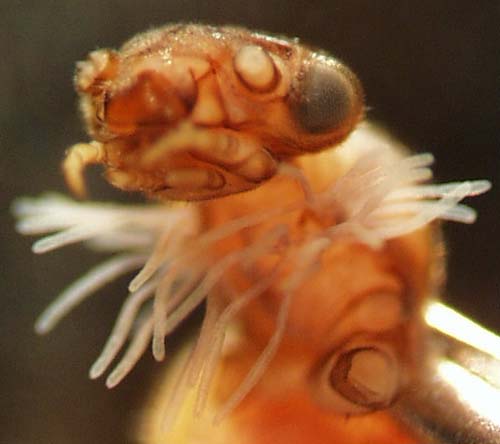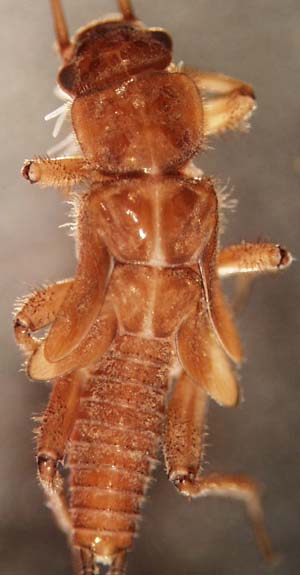
THE XERCES SOCIETY FOR INVERTEBRATE CONSERVATION Aquatic Invertebrates in Pacific Northwest Freshwater Wetlands |
| Identify taxa |
Nemouridae
|
|||
|
The Nemouridae are small, brown, hairy, and sometimes covered in debris. They don't move much in a collecting tray, making them very difficult to spot. Nemourids all look fairly similar to each other and have life histories that fall into one of two categories. All emerge as adults and lay eggs from late winter to early summer, so you would look for mature larva of all the nemourids in the spring. Most of the non-gilled nemourids rest as eggs from spring until late fall or early winter, then grow rapidly. All the nemourids with gills on the underside of their neck or head are collected regularly in late summer sampling, and several may be collected in the same sample. Nemourids have no gills on their abdomen, and are small, stout, and hairy. If you can get a good look at the mouthparts, the glossa and paraglossa are about the same length. Their body color ranges from white to pink to brown, or they may be covered in debris. Forestflies either have gills on the underside of their neck or head or none at all. |
|
Size: small
to medium Identifying feature(s): small, brown, hairy and stout Habitat: riffles of pools and streams Tolerance to pollutants: sensitive |
 |
|
© 2007 Xerces Society
Contact info@xerces.org


